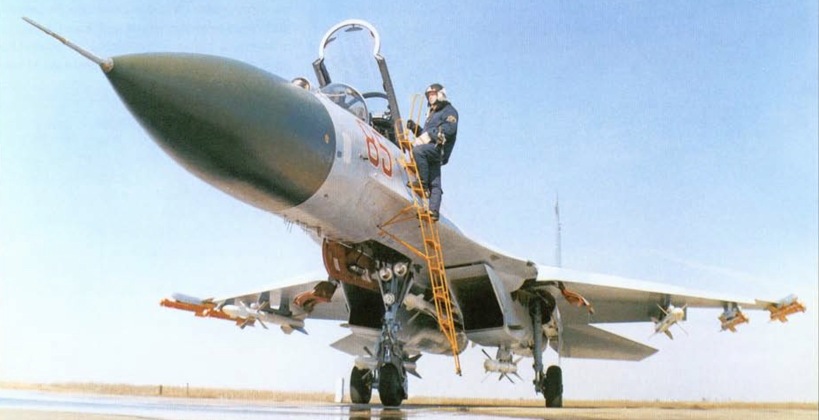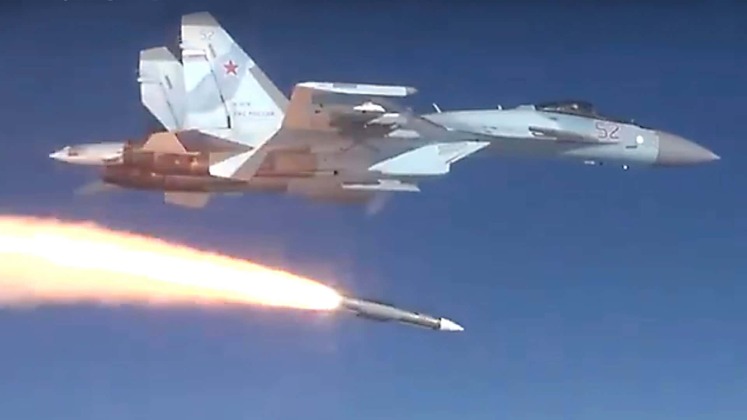Amid ongoing operations by the Russian Military on the territory of neighbouring Ukraine, the largest air battle of the conflict on March 5 reportedly saw four Ukrainian Su-27 Flanker fighter jets shot down in an air battle around the western Ukrainian city of Zhytomir. While it was specified that Russian air defences had shot down a Ukrainian Mi-8 helicopter, Su-25 attack jet and Bayraktar drone, the Su-27s were reportedly shot down in air to air combat. This would represent the first ever confirmed loss of a Su-27 in air to air engagements, and its first confirmed air to air engagement since entering service other than the 1997-98 Ethiopian Eritrean War. Prior Su-27 air to air engagements saw the elite heavyweight fighters, which at the time were widely considered the most capable in the world, shot down four lighter Eritrean MiG-29 fighters for no losses. The Su-27 is by far the most formidable aerial warfare asset in Ukrainian service, and an estimated 35 were in service when Russia began military operations on February 24 although on the first day one was lost to friendly fire from the ground while another saw its pilot flee with the plane to Romania. More are thought to have been destroyed during Russian strikes on Ukrainian airbases.

The Su-27 first entered service in 1985, and is widely considered the most capable fighter fielded by any air force during the Cold War. The fighter was designed to be able to go head to head with the most capable U.S. Air Force fighter the F-15 Eagle, and proved in multiple exercises and simulations in the 1990s to have significant superiority. Ukraine inherited Su-27s alongside lighter MiG-29s and over 1000 other combat aircraft when the Soviet Union collapsed, and is the only Western-aligned country to deploy the class. Although world leading for its time, Ukraine’s very limited pilot training hours combined with a lack of investment in upgrades for its Su-27 airframes has left them effectively obsolete for air to air combat against a modern adversary, and it was long predicted that the fighters would face a very overwhelming disadvantage if engaging modern Russian fighters. The Su-27 is deployed in limited numbers by the Russian Air Force, albeit not in priority areas or frontline locations, with the type having been quickly phased out of service in the 2010s and replaced with more modern Su-30SM and Su-35 aircraft.

The Su-27’s advanced capabilities and its status as the USSR’s finest fighter and the F-15’s direct challenger for decades fuelled interest and speculation regarding how it would perform in air to air combat. A Russian-Ukrainian conflict was since 2014 seen as the most likely possible theatre where the aircraft could see engagements, as the overthrow of the Ukrainian government that year and sharp deterioration of relations between Moscow and the strongly Western aligned new government in Kiev resulted in high tensions. While it remains uncertain which Russian fighters neutralised the Su-27s in the battle near Zhytomir – an engagement which will likely be remembered for decades due to how rarely modern fighters have seen air to air combat since the 1990s – it can be speculated that the Russian Air Force may have deployed its finest, namely Su-35s, for the engagement.

The Su-35 is derived from the Su-27’s airframe, but is overwhelmingly superior in all parameters with less than one third of the radar cross section, a radar five times as powerful, an 80 percent more powerful infrared sensor, 17 percent more powerful engines, and an engagement range of 400km against aircraft compared to just 130km for the Su-27. The Su-27’s lack of active radar guided missiles, modern cockpit displays, modern electronic warfare systems, or modern data links effectively ensured that any engagements would be extremely one sided. It remains uncertain whether the extreme losses suffered will be sufficient to ground the Ukrainian fighter fleet, or whether further large air battles will take place. For the Russian Air Force the ability to for the first time engage in a major air battle and demonstrate the combat potential of its top fighters represents an opportunity which it may at least in part welcome, potentially increasing foreign interest in its fighters while providing its units with an irreplaceable boost to morale and confidence.
